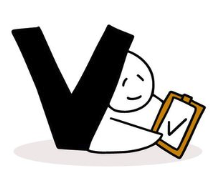A model for ongoing innovation in a large government organisation
Embedding human centricity to drive innovation for one of the most complex government service systems in Australia
Industry
Federal Government
Duration
14 weeks
Deliverables
17 Insights
16 Opportunity Areas
5 Current State Blueprints
230+ interactions assessed for efficacy
3 Future State Blueprints
Impact
Increased understanding of the customer experience across three main customer segments
Identified key opportunity areas for change
Created a North Star vision to guide future service development
Set the department up to continually apply an innovation mindset after our engagement with them
WHAT was the problem
Our partner, a federal government agency, had a significant problem - a fragmented approach to service delivery causing operational inefficiencies and headaches for their clients. There was a strong desire to shift towards a self-service approach, however they lacked a clear direction to start on this journey, compounded by an opaque understanding of their existing service landscape. They faced challenges such as broad scope and diversity of services, conflicting stakeholder priorities, and a rigid organisational mindset.
WAVE was engaged to help cut through the complexity and establish a “north star” vision to guide their future service development, aligned to their strategic goals.
APPROACH we took
Setting up the team as a true partnership
To tackle this complex challenge, a collaborative team was set up, comprising both WAVE and client representatives. This hybrid project team ensured ongoing ownership of the process and engaged a wide range of stakeholders, including key client experience representatives and subject matter experts from various areas within the organisation such as IT, Strategy, Legal and Compliance. Regular meetings and workshops brought all stakeholders together to ensure alignment and support for the project's direction. This deep engagement approach was met with enthusiasm from stakeholders and with high levels of interest from other areas of the organisation.
Putting People at the Center
To simplify the complexity of the organisation and prioritise people's needs, existing research and key client representatives were employed to map the life cycles of different client segments. This approach identified research gaps, areas of maximum complexity in clients' lives, and the full extent of the current service offerings. It also explored the motivations of different parties involved in each life event, highlighting tensions faced by clients.
Hands-on Client Research
Despite tight timeframes, in-depth research was conducted in highly complex areas of clients' lives where previous research was lacking. Specific participants were chosen to provide insights into multiple aspects of the research. This research included both clients and agents administering the system, providing a comprehensive understanding of the user experience. This pragmatic approach filled knowledge gaps while only requiring a relatively small cohort of research participants.
Ultimately we developed 17 client insights across the three client segments we explored, that shed light on the customer experience and their behaviours. We used these insights to help inform the assessment of the current state and shape the future state.
Assessing Service Performance:
To gauge service effectiveness, we approached it from three angles:
Customer experience - how easily clients achieved their goals during interactions.
Service cost and impact - the financial and user reach aspects.
Complexity of improvement - the difficulty in enhancing the service due to technological, organisational, and legislative factors.
Due to project time constraints, collecting comprehensive data was impractical and often unavailable. Instead, we employed a "high, medium, low" rating scale for assessment. We prioritised the client experience due to the wealth of readily available information, enabling us to swiftly identify areas for assessment from other perspectives. This practical approach allowed for a broad assessment in a shorter time frame with minimal disruption to stakeholders. The process identified 16 high-value areas across the organisation for redesign. Stakeholders found this approach clarified their understanding. A shared language and framework for discussing service effectiveness empowered them to think at an enterprise level rather than within their individual areas.
Collaborative Future State Design
To encourage stakeholders to think beyond current constraints, collaborative future state design workshops were conducted. These workshops included diverse perspectives, created a safe space for idea sharing, and prompted stakeholders to envision success in the near future. Hundreds of ideas were generated and refined into three interconnected future state experiences informed by trends in technology and society.
We unpacked these experiences with stakeholders from key enabling areas of the organisation to identify the capabilities needed and timeframes required to deliver. As a result, our stakeholders were immediately able to see how their current services initiatives could be shaped to begin to deliver against their vision and our future state concepts were seen as a way to resolve several emerging issues on the executive agenda.
This project utilised our STRATEGY expertise.
Find out more about our Strategy Service offering and how we work with clients to navigate forwards confidently.
VALUE we created
Aligned Vision for the Future
The project resulted in a future state service blueprint that emphasised priorities through 14 concepts. These concepts outlined future interactions with all parties involved, informed the development of service strategy, and served as the basis for visual management and prioritisation of future initiatives. Stakeholders expressed high satisfaction, and the project established a repeatable process to:
regularly understand the service delivery performance
routinely reimagine how services could be delivered into the future, and
calibrate organisational effort towards delivering the most value to both clients and the organisation.
Common Language for Conversations
Deliverables from the project introduced a common language and framework for executive conversations, fostering enterprise-level thinking. It attracted the attention of other client experience areas within the organisation, encouraging their involvement in the next phases of the process.
EMPOWERMENT we embedded
Ownership of outcomes
Our combined team and the involvement of key representatives at different levels from across the enterprise meant the future state vision and rationale behind was collectively owned by the group, supporting continued advocacy for the outcomes and direction.
Uplifting internal capability as we went
By explaining the context behind our approach and taking the time to educate our core team members and stakeholders at each point we upskilled both our partner designers and non-designers in human-centred design and innovation approaches. This empowered them to adopt the methodology to solve other problems in the enterprise, set them up for long term success and further supported innovation as a way of cutting through the complexity of the organisation to achieve results.
Tom Kerr has led high-profile projects that relied on human-centred design methodology to uncover opportunities and solve complex challenges for governments and large organisations. The work done by teams led by Tom has been presented to global decision makers and changed the way government departments work. For Tom, stories are everything — understanding stories and their context gives you everything you need to design the tools that make things better.
Get in touch
If you need a proven methodology to identify and solve problems, creating a culture of innovation along the way, we are here to help. We’d love to talk more about what you need and how we’ve helped in similar situations.







